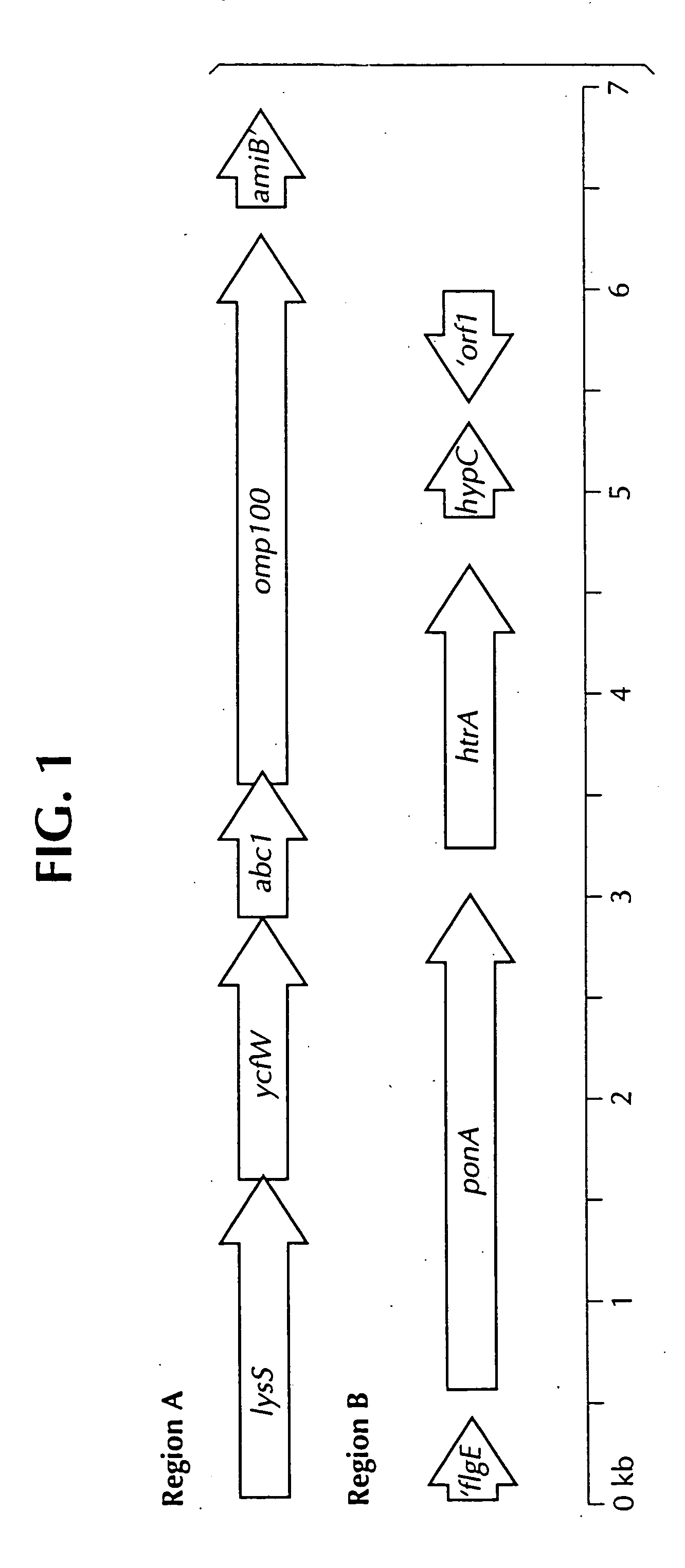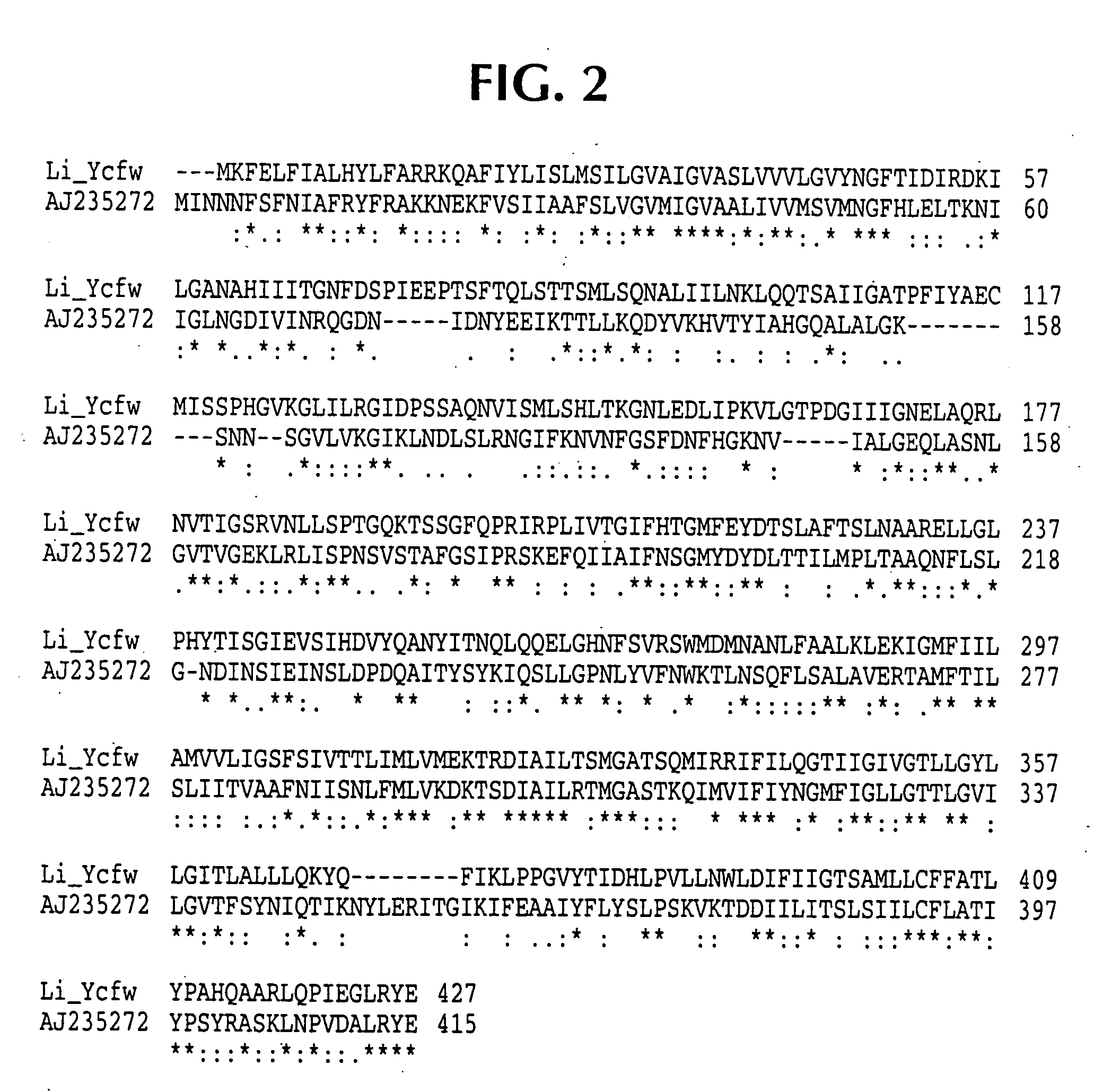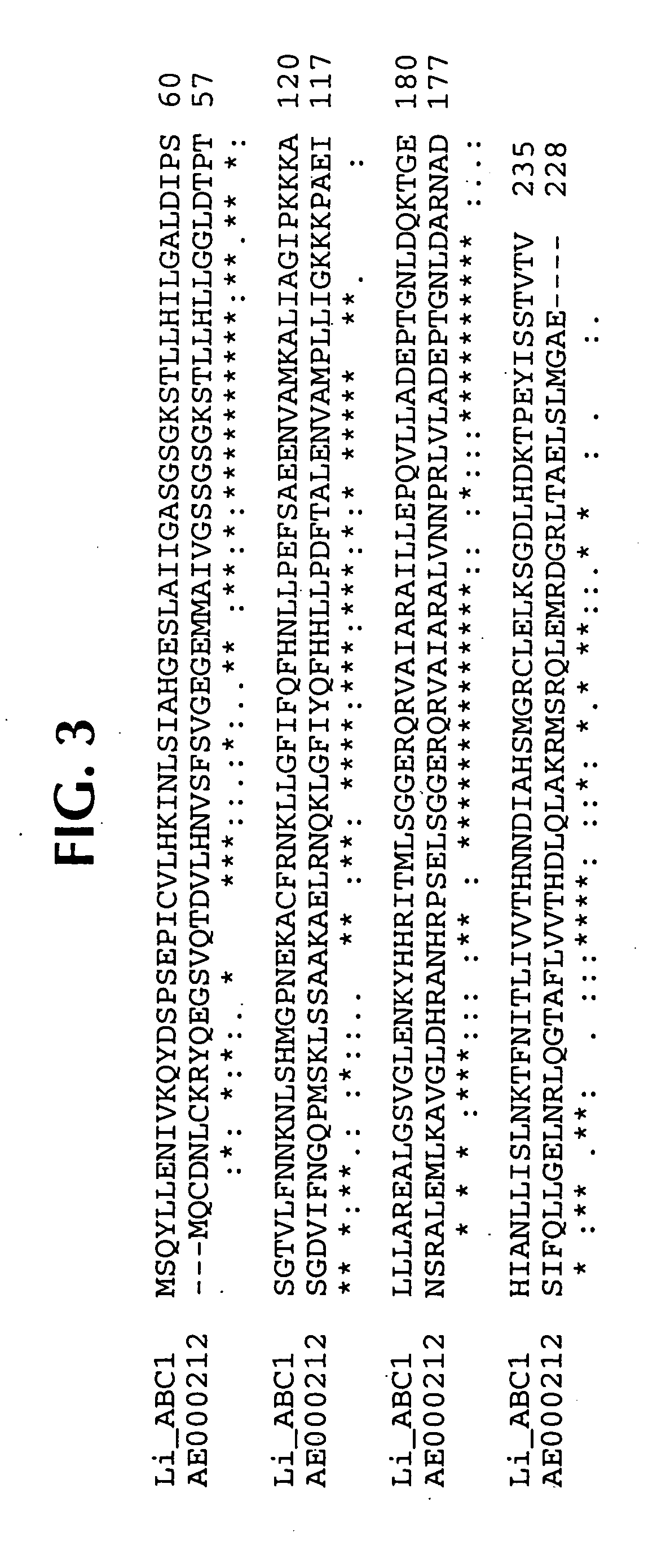Lawsonia intracellularis proteins, and related methods and materials
a technology of intracellular protein and lawsonia, applied in the field of proteins derived from lawsonia intracellularis, can solve the problems of mild diarrhea and growth retardation
- Summary
- Abstract
- Description
- Claims
- Application Information
AI Technical Summary
Problems solved by technology
Method used
Image
Examples
example 1
Molecular Cloning of L. intracellularis Chromosomal Region A Isolation of DNA and Construction of DNA Libraries
[0195] Template DNA was purified from pig intestinal mucosa isolated from the ileum of pigs experimentally infected with L. intracellularis. DNA purification from homogenized intestinal mucosa was performed according to (1) the method of Nollau et al. (Nollau et al., 1996, BioTechniques 20: 784-788) or (2) phenol extraction and sodium acetate-ethanol precipitation of DNA. To facilitate cloning of L. intracellularis gene sequences, several genomic libraries were constructed. These libraries were specifically modified by ligation of a known sequence (Vectorette II™, Genosys Biotechnologies, Inc., The Woodlands, Tex.) to the 5′ and 3′ ends of restricted DNA fragments. Vectorette™ libraries were constructed by separately digesting aliquots of L. intracellularis-infected pig mucosal DNA extract with restriction endonucleases HindIII, EcoRI, DraI or HpaI at 37° overnight. The re...
example 2
Molecular Cloning of L. intracellularis Chromosomal Region B
[0220] Molecular Cloning of Genomic Region B Encoding PonA, HtrA, HypC, and ORF1 Proteins.
[0221] Identification of genomic Region B (shown in FIG. 1) was accomplished by a genomic walking process similar to that described for identification of genomic Region A. Screening of the HindIII, EcoRI, DraI, and HpaI Vectorette™ libraries was carried out to obtain DNA fragments located adjacent to gene flgE from L. intracellularis which encodes a protein with homology to the flagellar hook protein of other bacteria. Oligonucleotide primers ER142 (SEQ ID NO: 34), ER153 (SEQ ID NO: 35), and ER158 (SEQ ID NO: 36) were designed based on the known nucleotide sequence 3′ of flgE. All three primers were designed to bind the (+) strand within this region to allow amplification of DNA located downstream of the gene encoding FlgE.
[0222] For polymerase chain amplification of a fragment of the ponA gene, oligonucleotides ER142 (SEQ ID NO: 34...
example 3
Preparation of Plasmids and Deposit Materials
[0247] Plasmids containing DNA fragments encompassing L. intracellularis Region A Plasmids were prepared containing the L. intracellularis genomic region representing the lysS, ycfW, abc1, and omp100 genes. A 2.6 kb fragment encompassing the lysS gene and a portion of the ycfW gene was amplified using primers ER246 (SEQ ID NO: 97) and ER254 (SEQ ID NO: 98) while a 0.87 kb fragment encompassing a portion of the ycfW gene and complete abc1 gene fragment was amplified using primers ER229 (SEQ ID NO: 73) and ER206 (SEQ ID NO: 66). These fragments were amplified as described in Example 1 under “Specific PCR amplification of subgenomic DNA fragments encompassing L. intracellularis Region A”. The 2.6 kb and 0.87 kb DNA fragments were isolated by extraction with spin chromatography (QIAquick™) and inserted into the TA cloning site of pCR2.1 Topo. Single sequence extension reactions utilizing vector-specific sequencing primers confirmed the endpo...
PUM
| Property | Measurement | Unit |
|---|---|---|
| wt % | aaaaa | aaaaa |
| wt % | aaaaa | aaaaa |
| volume | aaaaa | aaaaa |
Abstract
Description
Claims
Application Information
 Login to View More
Login to View More - R&D
- Intellectual Property
- Life Sciences
- Materials
- Tech Scout
- Unparalleled Data Quality
- Higher Quality Content
- 60% Fewer Hallucinations
Browse by: Latest US Patents, China's latest patents, Technical Efficacy Thesaurus, Application Domain, Technology Topic, Popular Technical Reports.
© 2025 PatSnap. All rights reserved.Legal|Privacy policy|Modern Slavery Act Transparency Statement|Sitemap|About US| Contact US: help@patsnap.com



